Podcast: Play in new window | Download (Duration: 12:34 — 12.8MB)
In Episode 30, I admit a M I S T A K E, in that I did not realize Finland has a sizable moose population and so therefore assumed that although this thing looks like a moose, it must be a reindeer head. So because I made a M I S T A K E, the whole class is being punished by learning about reindeer and moose of Finland.
Oh yeah, I’m back from my trip to Finland. I had a great time!
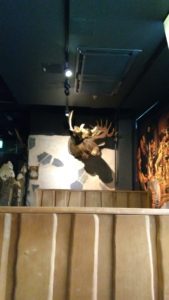
Finnish forest reindeer:
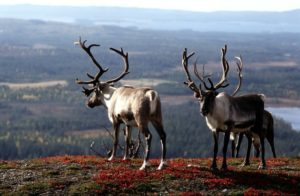
Barren-ground caribou:
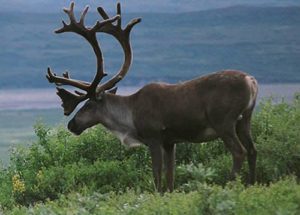
Finnish moose:
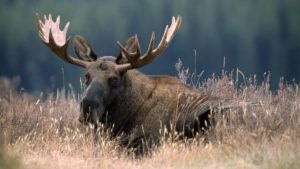
Alaskan moose:
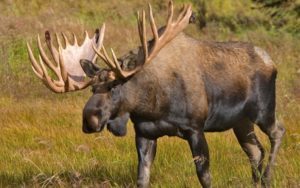
Whee!
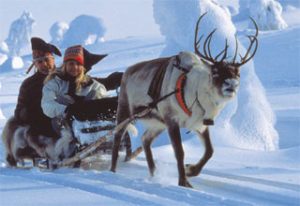
Oh, here’s a link to information about my new book! More details coming next week.
Show transcript:
Welcome to Strange Animals Podcast. I’m your host, Kate Shaw.
This is the first episode I’ve put together since returning from Finland last week. I had a great time on my trip! WorldCon was amazing, I got to hang out with some good friends, and I had lots of positive feedback after the panel I was on. One day I went to a fun Viking-themed restaurant with my friends Emma and Dave (hi guys!), where I ordered reindeer. It was really good, and when I got my food I tweeted a picture of the plate along with a picture of a stuffed animal head across from me. I captioned it something like, “A reindeer is watching me eat reindeer.”
Unfortunately, that wasn’t a reindeer head. It was a moose head. When I first saw it I knew it was a moose head, but I didn’t believe myself that it was a moose head because there’s no moose in Finland, right? Just reindeer.
Five thousand replies correcting me later, I sheepishly admitted that I was wrong and swore I would in the future trust myself to ID moose heads versus reindeer heads without convincing myself I was wrong. And just to clear things up, here’s an entire episode on certain hoofed Ice Age megafauna that live in Finland.
The reindeer living today are all one species, Rangifer tarandus, although there are a number of subspecies. Reindeer evolved about 3 million years ago and are closely related to moose.
During the late Pleistocene, better known as the ice ages, reindeer were much more widely spread than they are today. You could have found herds of reindeer in Tennessee and Spain during the last glaciation around 12,000 years ago. These days, wild reindeer are found in Norway, Finland, Iceland, and Siberia, and in Alaska, Canada, and Greenland. In North America, reindeer are called caribou. Wild reindeer and caribou numbers are in decline worldwide due to climate change and habitat loss.
Most reindeer are migratory to at least some extent. Some populations of caribou in North America migrate 3,000 miles a year. The only mammals that migrate farther than that are whales. Mating occurs during autumn migration, and calves are born after spring migration in May or June.
Reindeer have larger hearts than other ruminants of about their same size, which helps them run and swim for extended periods of time in cold environments. Reindeer knees click when they walk, and researchers believe this helps individuals keep track of each other in white-out conditions.
Reindeer eat leaves, twigs, some types of grass, and mushrooms, but their primary food in winter is the reindeer lichen. Mammals don’t typically eat lichens, but reindeer have developed a special enzyme called lichenase that helps them digest it. In spring they may also eat bird eggs, fish, and rodents when they can catch them. Instead of secreting urea in their urine as almost all mammals do, reindeer retain it within the digestive system for the nitrogen it contains.
Now, in my defense, the reindeer I’m familiar with are North American caribou, and many caribou have somewhat palmate antlers and heavy muzzles that kind of resemble moose. At least at first glance, especially if you’re convinced you’re looking at a reindeer head and not a moose head. Most reindeer in Europe have slenderer muzzles and more typically deer-like antlers. Reindeer have the largest antlers to body size of all living deer species, even counting the moose. Moose antlers are larger, but moose bodies are also bigger. Some mature male forest reindeer can have antlers almost seven feet wide with up to 44 points. Both females and males grow antlers, although females have smaller antlers and individuals in some populations don’t grow them at all. While males shed their antlers soon after the rut season, females keep theirs all winter and use them to defend their feeding areas from other reindeer.
In winter reindeer hooves are sharp and hard like ordinary deer hooves, which helps them keep a good purchase on ice and allows them to dig through snow to the lichen beneath. In summer, though, when the ground is muddy and soft, the hooves become more like spongey footpads to help spread their weight across a larger surface.
The first mention of reindeer herding comes from the ninth century, but the Sámi people, once called Lapps, of what is now northern Finland, Sweden, and Norway had probably domesticated reindeer long before that—at least 2,000 years ago and possibly as long as 7,000 years ago. The Sámi were traditionally nomadic, moving with their herds. They used reindeer for meat, milk, fur, and transport. These days reindeer herding is pretty hands-off, with herds moving around as they like while the herders check them periodically using ATVs or snowmobiles. But reindeer herding is an important aspect of Sámi culture, and extensive knowledge of reindeer and weather is still passed down mostly orally.
While reindeer have been at least semi-domesticated for thousands of years, the caribou of North America have never been domesticated, although many native cultures in North America depend on caribou hunting. As a result, domesticated reindeer tend to be heavier than caribou, migrate much shorter distances, and calve earlier in the year.
Next, let’s talk about moose. In North America, moose are called moose. But in Europe, moose are called elk.
The word elk is old and comes from the same Germanic root language that Old English evolved from. The word moose was borrowed from the Algonkian languages at the end of the 16th century. So I guess it’s inaccurate to say that it’s wrong to call your moose elk. I mean, before the 16th century people in Europe had to call moose something and the word elk was just sitting there. What we call elk in North America is a totally different large deer, native to North America and parts of Asia. But since the word moose is just fun to say, I don’t know why people in Europe haven’t adopted it. Then again, I also don’t know why we call elk elk and not WAH-pah-tee [wapiti] in North America, since wapiti is another Algonkian word.
But yes, moose do live in Europe, specifically northern Europe and parts of Russia. Moose did once have a much larger range. Moose remains only 3900 years old have been found in Scotland, but once the moose died out, the word elk was just floating around with nothing to fasten itself to, so for a long time people in Britain used the word elk to refer to any large deer, especially red deer—which resemble North American elk aka wapiti.
Anyway, I’m calling them moose and we’re not going to discuss the wapiti in this episode because I’m already confused enough as it is.
Like the reindeer, there is only one species of moose but several subspecies. The biggest are the Alaskan moose and the East Siberian moose. Big males of both can stand over seven feet tall at the shoulder and weigh over 1500 pounds. The moose subspecies of North America generally have larger antlers with two lobes each, whereas Eurasian moose subspecies typically have one lobe each. The largest spread of antlers ever measured was just under seven feet across. Only male moose grow antlers.
The moose likes marshy or wet areas and eats a lot of aquatic plants, although it will also rear up on its hind legs to reach tree leaves. It eats leaves, twigs, and roots, and prefers low-fiber plants. It can’t digest hay. Moose have even been known to dive to reach plants. Its nostrils seal when underwater, which allows it to eat without lifting its head out of the water.
Moose evolved around 2 million years ago in Europe, with the earliest known species called the French moose. It was actually bigger than the Alaskan moose but looked more like a deer. It didn’t have the modern moose’s heavy snout and its antlers were over eight feet across, mostly just one unbranched beam with a small palmation at the ends. By around a million years ago the French moose had given rise to the broad-fronted stag moose, which migrated from Eurasia to North America. It looked more like its modern descendant.
Like all deer, moose and reindeer have no upper incisors, just a hard palate. Both are also ruminants, which means their food goes through a complex system of bacterial fermentation, including needing to be regurgitated and rechewed as cud, so that the animal can extract as much nutrition from low-protein plant food as possible.
Around 100,000 moose live in Finland and hunting permits are limited each year to roughly the same number as calves born that year. Moose sound exactly like you’d expect them to sound, like this:
[angry moose sound–HOOOOOOONK HOOOOOONK HOOOOOOOOOONK]
While I was in Finland, I didn’t find as much time to bird as I’d planned. But my first night in Helsinki let me see an animal that I didn’t expect to see at all—I didn’t, in fact, know it was an animal that ever lives in cities. I won’t go into the reason why I was wandering around Helsinki at 3am on a Monday because it’s a long story without much of a payoff. But while I was out and about, I kept seeing an animal that at first I couldn’t identify. At first glance I thought it was a huge rat, but its legs were too long. Then I thought it might be a dog, but it wasn’t shaped right. It took me several sightings to realize I was looking at a hare, probably the European hare.
I’d never seen a hare before. I’m used to our cottontail rabbits, which are adorable and have tails like powder puffs, but which aren’t very big. This hare was easily over a foot tall with long legs, and it was hopping busily around the quiet streets of Finland’s largest city under the light of a full moon.
That’s it for this episode—apologies for how short it is, but I am unbelievably jetlagged. If you’re listening to this one the week it comes out, I’ll be at DragonCon this weekend. If you’re going to be there too and want to say hi, feel free to email or tweet at me! After DragonCon my schedule should go back to normal.
Oh, and one last thing—I have a book out! I’ll talk about it more in next week’s episode, but if you’re interested, the book is called Skytown and it’s a fun steampunk fantasy adventure about a couple of ladies who are airship pirates. It’s available in paperback right now but should soon be released as an ebook too. It’s published by Fox Spirit Books. I’ll put a link in the show notes.
Anyway, you can find Strange Animals Podcast online at strangeanimalspodcast.com. We’re on Twitter at strangebeasties and have a facebook page at facebook.com/strangeanimalspodcast. If you have questions, comments, or suggestions for future episodes, email us at strangeanimalspodcast@gmail.com. If you like the podcast and want to help us out, leave us a rating and review on iTunes or whatever platform you listen on. We also have a Patreon if you’d like to support us that way. Rewards include stickers and twice-monthly bonus episodes.
Thanks for listening!